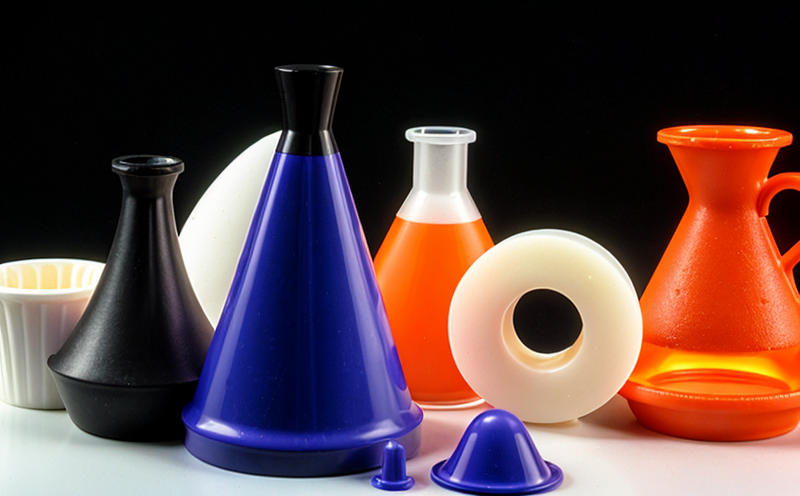ISO 21367 Polymer Additive Residue Testing
The ISO 21367 standard provides a comprehensive approach for determining the residue of additives in polymers, which is crucial for ensuring product quality and safety. This test ensures that polymer products meet regulatory requirements and industry standards by accurately quantifying residual levels of additives. The process involves several critical steps including sample preparation, solvent extraction, analysis, and interpretation.
Sample preparation is the first step where polymers are ground into a fine powder to ensure even distribution during dissolution. Solvent extraction follows using solvents that selectively dissolve only the additive components without affecting the polymer matrix. This ensures accurate measurement of the additives present in the sample.
The extracted solution undergoes quantitative analysis, typically by gas chromatography or infrared spectroscopy, depending on the type of additives being analyzed. The analytical method chosen must be validated to ensure precision and accuracy within defined limits as per ISO 21367 guidelines.
Once determined, these levels are compared against acceptable thresholds specified in relevant standards like ISO 21367 or ASTM D5983. Compliance with these limits ensures that the polymer products do not contain excessive amounts of potentially harmful additives that could affect product performance or pose health risks.
| Analytical Method | Purpose | Advantages | Disadvantages |
|---|---|---|---|
| Gas Chromatography (GC) | Detects and quantifies volatile organic compounds in the extracted solution. | High sensitivity, precise detection limits. | Sensitive to moisture contamination; requires skilled operators. |
| Infrared Spectroscopy (FTIR) | Identifies functional groups characteristic of specific additives. | No solvent extraction required, simple sample preparation. | Limited to qualitative analysis; lower sensitivity compared to GC. |
Why Choose This Test
Selecting the ISO 21367 Polymer Additive Residue Testing is essential for maintaining high standards of quality and regulatory compliance. It offers several advantages over other methods, such as enhanced precision and reliability due to standardized procedures outlined in the standard.
- Accurate measurement of additive residues ensures product consistency.
- Reduces risks associated with excessive additive content affecting health and safety.
- Promotes adherence to international standards, facilitating global trade.
- Supports research and development efforts by providing reliable data on additive performance.
Quality and Reliability Assurance
The ISO 21367 standard emphasizes the importance of quality assurance throughout the testing process. Compliance officers can rely on this method to ensure that their manufacturing processes meet stringent requirements, thereby maintaining a high level of product integrity.
R&D engineers benefit from accurate residue data which helps in optimizing formulations and improving product performance. For procurement teams, adherence to ISO 21367 ensures they receive materials that comply with international standards, reducing the risk of non-compliant products entering their supply chain.
By implementing this testing protocol, organizations demonstrate their commitment to quality assurance and regulatory compliance, which is increasingly important in today’s competitive market environment.
Use Cases and Application Examples
- Manufacturing of medical devices requiring strict control over additive levels to ensure patient safety.
- Production of food packaging materials where residual additives could impact human health.
- Battery manufacturing, where excessive additive residues might affect battery performance and lifespan.
The following table provides specific examples of how ISO 21367 can be applied:
| Industry Sector | Product Type | Testing Purpose |
|---|---|---|
| Bioengineering | Medical Implants | Evaluate potential toxicological risks from additive residues. |
| Packaging | Plastic Bottles | Determine compliance with food contact safety regulations. |
| Electronics | Battery Cells | Monitor additive stability over time to ensure consistent performance. |





